This is the guide explaining the basic milestones of qone8.com removal. Qone8 is a new browser hijacker which can easily attack any browser that you have set by default, including Google Chrome, Mozilla Firefox, Internet Explorer and Opera. It looks pretty much the same as qvo6.com hijacker. Once it attacks your PC your search queries will be permanently redirected via this site. As a result, the search results are partially perverted, don’t really meet your expectations and are bundled with many annoying online advertisements of various products and services. Obviously, this fact isn’t a very pleasant event for users. As a result, they have quite an understandable intention to remove qone8 effectively and completely. If this hiajcker attacked your machine, use these instructions to get rid of www.qone8.com as the start page of your browser.
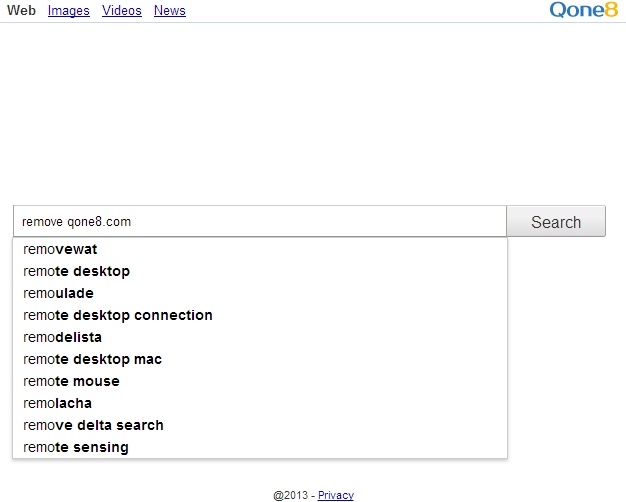
There are various ways how qone8 may attack your browser. In many cases users complain that they got this malware out of the blue. Obviously, this indeed may take place; the world wide web is full of various trojans and worms which bring a lot of unwanted programs which are rightfully categorized as malicious. When it comes to qone8, we can’t really classify this browser hijacker as malware, yet the methods of its installation without user’s approval are surely illegal.
In many cases qone8 is installed through bundled software downloads and subsequent installations. There are many online applications which are free of charge and thus can be easily downloaded online. Yet, this is where the danger is often concealed. When you install the initial program of your preference, you’re prompted to install a lot of extras, including such unwanted utilities as qone8, various useless system optimizers, pointless speed boosters, fake registry defragmenters and many other bogus system utilities. Yet, the setup wizard of this free application of your choice clearly tells that it will install qone8 into your machine as your default search engine and www.qone8.com as the default search page of your preferred browser. The installer even gives the option to cancel this default drive-by installation and switch to custom installation. Yet, this is often the failure of users to remove the respective box during the installation process. As a result, they have their browser hijacked with qone8.
As an example of the program bundled with qone8 hijacker, we can speak of Omiga Plus. If you install this application, the installer will clearly mention that you’re installing qone8 with it, yet giving you the option to modify the default installation and choose customer installation where users can uncheck the option of qone8 bundled installation. Again, many users fail to be attentive during the setup process. As a result, they see a lot of unwanted stuff on their computers.
The creators and owners of qone8 promise to really enhance the search results by combining them from various search engines like Google, Bing, Yahoo, etc. Yet, we strongly doubt that you will enjoy qone8. Instead, the only reason why this hijacker attacks computer is the issue of bringing money to its developers and proprietors. This attraction of money takes place though online advertising together with the perverted search results.
What’s really bad with qone8 is that it assigns certain random argument, such as http://www.Qone8.com/us/newtab?si=43460&shortcut=true&tid=295 as en example, to various Windows shortcuts located on desktop and in Windows Start Menu. As we’ve mentioned above, Qone8 will demonstrate advertisements and sponsored links together with your search results, and may even gather search terms from your search queries. This all gives us the grounds to speak of qone8 as a potentially unwanted application.
If qone8 has attacked your browser and you have www.qone8.com as homepage of your browser and you default search engine, please carefully follow the uninstall guidelines outlined below. If you have any problems or questions please express them in decent comments, we’ll try to assist you the best we can in deleting qone8 off your computer.
General tips to get rid of qone8.com from various browsers.
Qone8 removal from Internet Explorer.
- Go to “Tools“, select “Internet Options” panel.
- Click “General” tab.
- Delete qone8 homepage link and set a new homepage link.
- Click “Settings” button in the “Search” area, open “Manage Add-ons” panel.
- Remove qone8, then close “Manage Add-ons” panel.
- Click “Apply” or “OK” on “Internet Options” panel to apply the changes.
Qone8 removal from Mozilla Firefox.
- Open Mozilla Firefox.
- Go to “Firefox” button in the upper-left window corner, then select “Options” panel.
- Click “General” tab.
- Delete qone8 homepage link and set a new homepage link.
- Go to “Firefox“, then select “Add-ons” and open “Add-ons Manager” panel.
- Click “Remove” button in the right of qone8.
- Choose “Manage Search Engines” in the search list.
- Remove qone8, then click “OK“.
- Restart Mozilla Firefox.
Qone8 removal from Google Chrome.
- Open Google Chrome.
- Click “Customize and control Google Chrome” in the right-top of the page.
- Choose “Settings“, then click “Set pages” link to delete qone8 homepage link. Then click “OK“.
- Click “Manage search engines”, delete qone8, then click “OK“.
- Via “Customize and control Google Chrome” go to “Tools“, select “Extensions” open “strong>Extensions” panel.
- Remove “qone8“.
- Restart Google Chrome.
Restoring shortcuts of amended browsers.
- Find the shortcut of the browser (Internet Explorer, Mozilla Firefox, Google Chrome, Opera, etc.) in all locations of the computer, including but not limited to the desktop.
- Right click and find the “Option“.
- Delete qone8 in “Target” of the tab “Shortcut“.
Additional and detailed guidelines to fix qone8 browser redirection issue:
Lists of recommended steps to fix browser redirection problem:
- Remove all adware, browser hijackers and other unwanted programs through the Control Panel of your computer.
- Scan your system with powerful antivirus program.
- Check the Local Area Network (LAN) settings of your system.
- Check if DNS settings have been amended by browser hijacker.
- Check browser add-ons. Remove all unknown or suspicions add-ons detected (enabled).
- Checking Windows HOSTS file contents
- Scan your computer with Kaspersky’s TDSS Killer (TDSSKiller) to get rid of malware that belongs to Rootkit.Win32.TDSS family.
- Consider using CCleaner to remove all undesirable system/temp files and browser cache.
- Consider running adware-cleaning applications.
- Restoring desktop shortcuts of hijacked browsers.
- Reset your Router to the factory default settings.
Step #1. Removing adware and browser hijackers through the Control Panel of your PC.
It is of primary importance to first get rid of all adware programs and browser hijackers through Add/Remove Programs section of your Control Panel (when using Windows XP), or through Uninstall a program section of Control Panel in Windows Vista, Windows 7 and Windows 8). For this purpose please refer to the Start Menu. Choose Control Panel, and then go to Add/Remove Programs. Likewise, when using Windows Vista, Windows 7 or Windows 8, select Control Panel and choose Uninstall a Program.
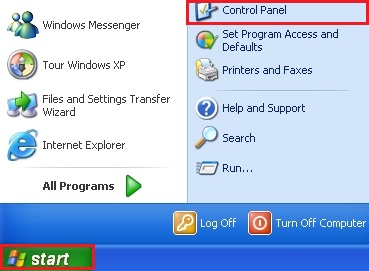
Now, with Windows 8 things are a little bit different. What you should do is just direct the mouse pointer to the right corner of the screen, and then select Search from the list, and search for “Control Panel“.

In the respective section of Search window, type “Control Panel“, and you will see the search results as follows:

So, after you’ve opened the sections Add/Remove or Uninstall a Program, carefully browse through the contents of presently installed applications and get rid of particular adware or browser hijacker, toolbar, search bar or anything else that has the name similar to that site through which your browser redirects your search. Keep in mind that if such program is in the list of installed programs, then it appeared there because of your direct participation in its installation process. You may actually click “Installed programs” and even sorts these installed applications by date. When you find anything suspicious that might cause browser redirection, select this application and click Remove. When using Windows Vista, Windows 7 or Windows 8, choose Uninstall in the upper part of the window. Once the program is successfully removed make sure you close the Control Panel window.
Step #2. Scanning computer with effective malware removal tool.
There are many working and reliable anti-virus programs these days. The degree of their effectiveness depends on various factors, primarily on how often their anti-malware databases are updated in order to effectively tackle all virus alterations and modifications. The majority of viruses in the cyber world today don’t last long in their initial shape. They get regularly amended by their developers in order not to be tracked (detected) by security applications. So, you should be very selective when considering security application for your PC. You might choose several programs, not just one. Make sure that you have the kind of security application that has the powerful module of online (real-time) protection against all contemporary threats and infections. We recommend you to choose the program that we display in the right-upper section of this blog. We in particular recommend running Plumbytes Anti-Malware that can be downloaded below.
Step #3. Checking the Local Area Network (LAN) settings.
- Go to “Start” Menu and again select “Control Panel“.
- Choose “Network and Internet“.
- Choose “Internet Options“.
- Go to “Connections” tab, afterwards click “LAN settings” button.
- Remove (uncheck) the checkbox under “Proxy server” option and click OK.

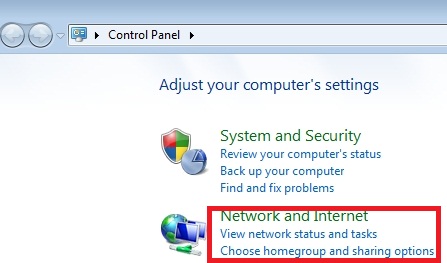
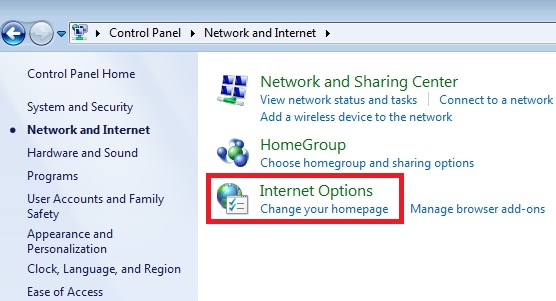
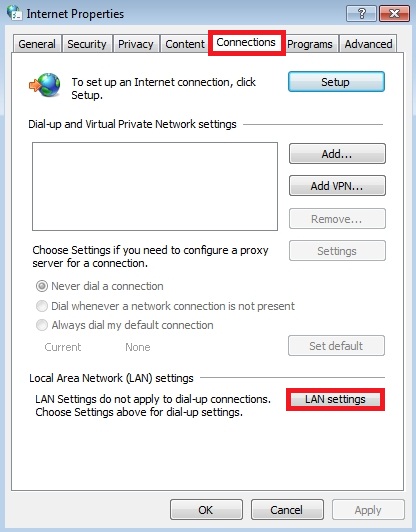

Step #4. Checking DNS settings.
- Go to “Start” Menu and refer to “Control Panel“.
- Choose “Network and Internet“.
- Go to “Network and Sharing Center”.
- Select “Local Area Connection”.
- Choose “Properties”.
- Choose “Internet Protocol Version 6 (TCP/IP V6)” and select “Properties”.
- Select “Obtain DNS server address automatically” and click OK.


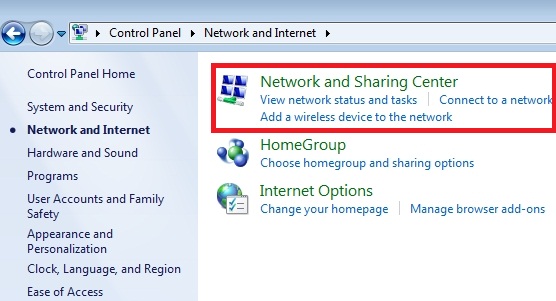
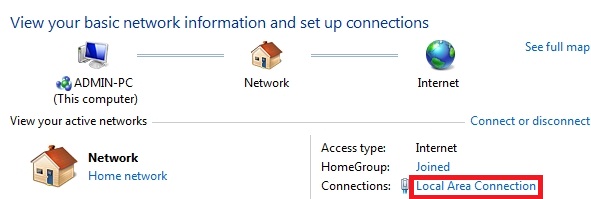
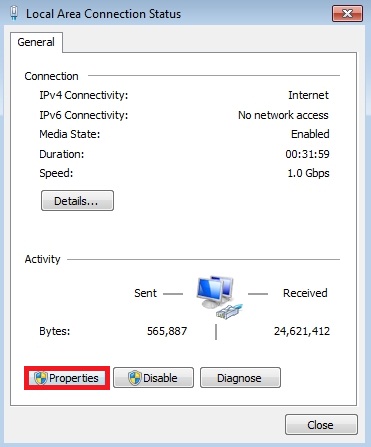
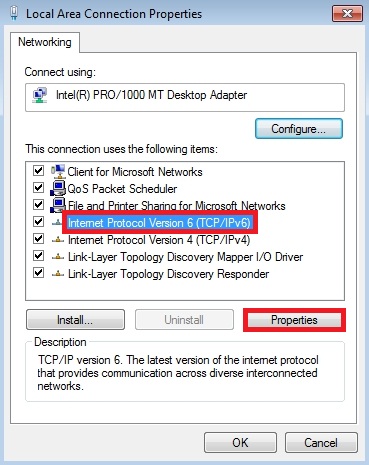
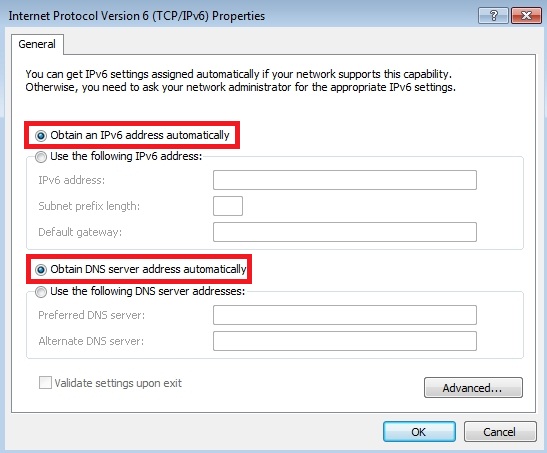
Step #5. Checking browser add-ons. Removal of all add-ons associated with qone8.com hijacker.
- Go to “Start” Menu and direct your mouse pointer towards “Control Panel“.
- Choose “Network and Internet“.
- In the section “Internet Options” choose “Manage browser add-ons“.
- Get rid of any Toolbars and add-ons related to qone8.com.


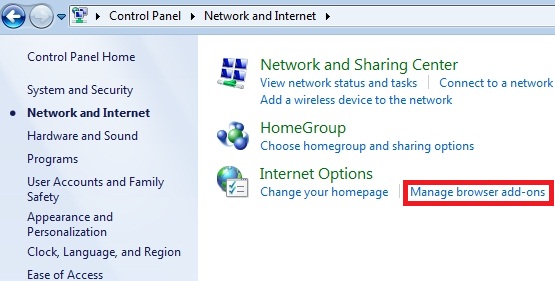
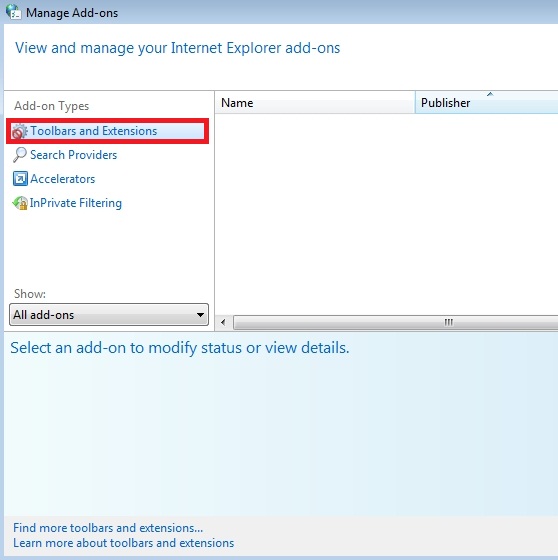
Important! For more information on managing browser add-ons please go to this guide for additional information on managing add-ons and extensions depending on the type of your default browser – https://www.system-tips.net/managing-browser-add-ons-to-fix-search-engine-redirection-problem/ .
Step #6. Checking Windows HOSTS file contents
- Go to: C:\WINDOWS\\system32\\drivers\\etc.
- Double-click “hosts” file to open it. Select the option to open it using Notepad.
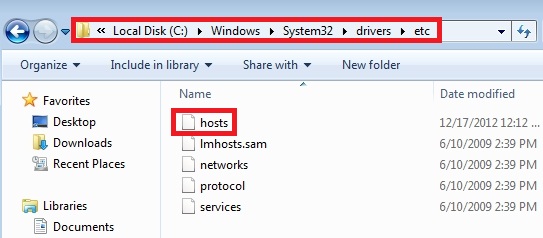
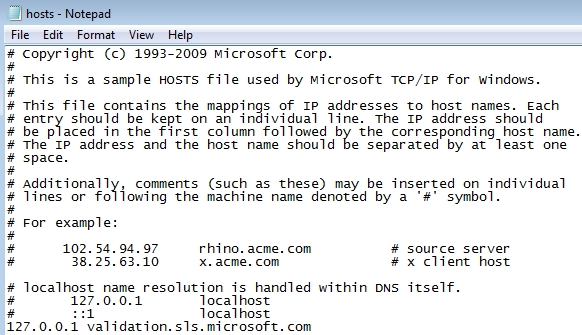
li>The “hosts” file must look the same as in the image below. There should be just one line: 127.0.0.1 localhost in Windows XP and 127.0.0.1 localhost ::1 in Windows Vista/Seven. If there are more, then remove them and apply changes.
Important! You may also choose the feature to reset your HOSTS file using the Tool of Plumbytes Anti-Malware as shown at the image below:
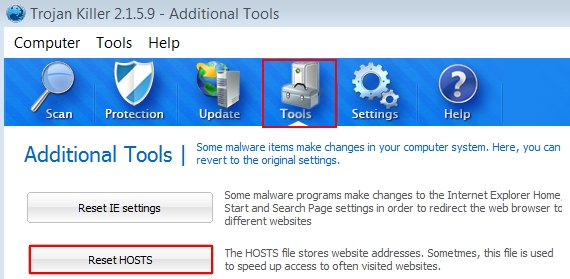
Step #7. Scanning with Kaspersky’s TDSS Killer (free application).
- Download and run TDSS Killer from this link.
- Wait for the scan and disinfection process to be completed. Shut down all applications and hit “Y” key to reboot your system.
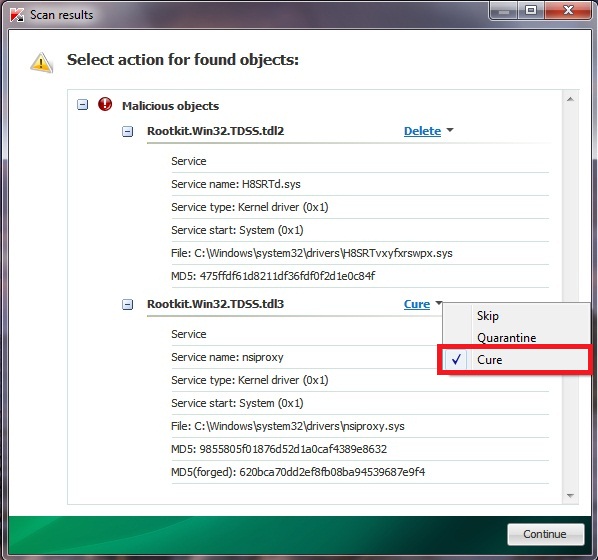
Step #8. Using CCleaner.
CCleaner is the application that can be easily googled and thus downloaded. When running it, keep in mind that it will clean the entire “Temp” directory of your computer, so if you have anything important in it please first save the data you need into other locations.
Step #9. Running adware-cleaning applications.
This option is also recommended. There are many working and effective automatic solutions that might be helpful to you when dealing with browser redirection issues. Again, Google will point you in the right direction to find the adware-cleaning program of your preference.
Step #10. Cleaning shortcuts of browsers that have been hijacked.
This step applies only to certain browser hijackers which are extremely severe. However, it is strongly recommended that you perform this important step. So, search for your browser shortcut depending on where it is located – on Desktop, in Taskbar or in Start Menu. Now, right-click it and select Properties:
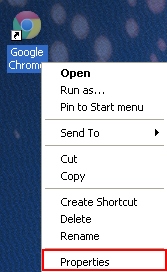
Click Shortcut tab and get rid of any name of the site through which search redirection occurs from the Target field and click OK to apply changes. Generally, there should be only the path to the executable file of your browser, nothing else. See how this is represented on the example of Google Chrome browser:
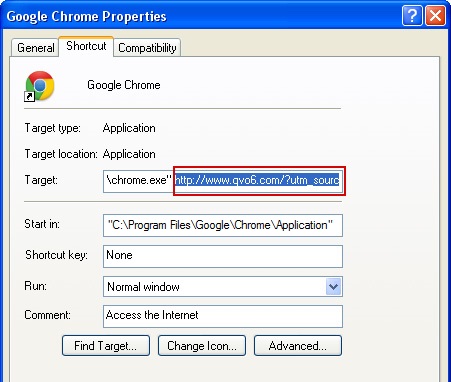
Step #11. Resetting Router to factory default settings.
At this point we should emphasize that resetting the router to the factory default settings is the option to which you should adhere only if other tricks above didn’t work. So, this recommendation should only be followed if in spite of all the above-mentioned recommendations you still have the redirect virus on your machine. Then you should flush DNS cache:
- Click “Start” and in the open space write down “run” This surely applies to Windows Vista and Windows 7 operating systems. With Windows XP you may fine “Run…” once you click “Start” menu option. With Windows 8 you may direct your mouse pointer towards the right section of your desktop until the menu comes up with “Search” tab. This is where you may look for Run command.
- Type “cmd” without quotation marks.
- In a new window please type “ipconfig /flushdns” without quotation marks and press Enter.
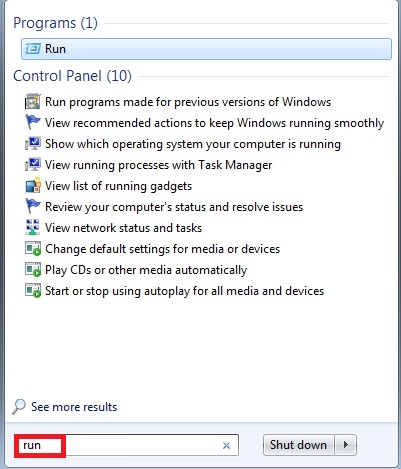
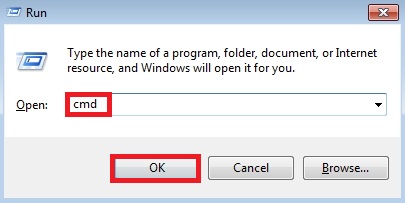

We hope this guide has helped you removing qone8 from your computer that surely cause a tremendous load of problems for our brains. In spite of the fact it is annoying, it also makes your systems more and more vulnerable to further attacks of malwares. So, you’ve surely made a good decision to remove it off your computer. Keep in mind that there are various modifications and names of browser hijackers. Some of them are quite simple to remove, whereas others require more time to be deleted. If you have any difficulties getting rid of them, simply let us know. We’ll do all our best to assist you the best we can. Again, true comments are always welcome, so why don’t you drop a line to share what you think about this guide and whether you benefited from it? If this tutorial has helped you, share this information with other people so that they would know how to deal with such serious problems as the issues of browser redirection. Good luck!





I followed your your qones8 removal instruction for Google Chrome without success. I finally succeeded in deleting qones by deleting the shortcut then created a new short cut. I hope this will helpful to anyone with a similar problem
After you scan and remove all infections, you need to shut down your browser. Then you need to open Trojan Killer, and click Tools and Reset browser settings in it. This is how qone8 can be removed. The only scanning and removal of infections will not help…
Which shortcut you had deleted? in which location?
Don’t delete any shortcuts! Fix them as instructed (through removal of junk related to qone8.com in the part to the executable of the browser).
it helped me a lot thank u very much i finally got rid of qone8 problem
as it would open in my internet explorer again thank u very much …….awesome site 🙂